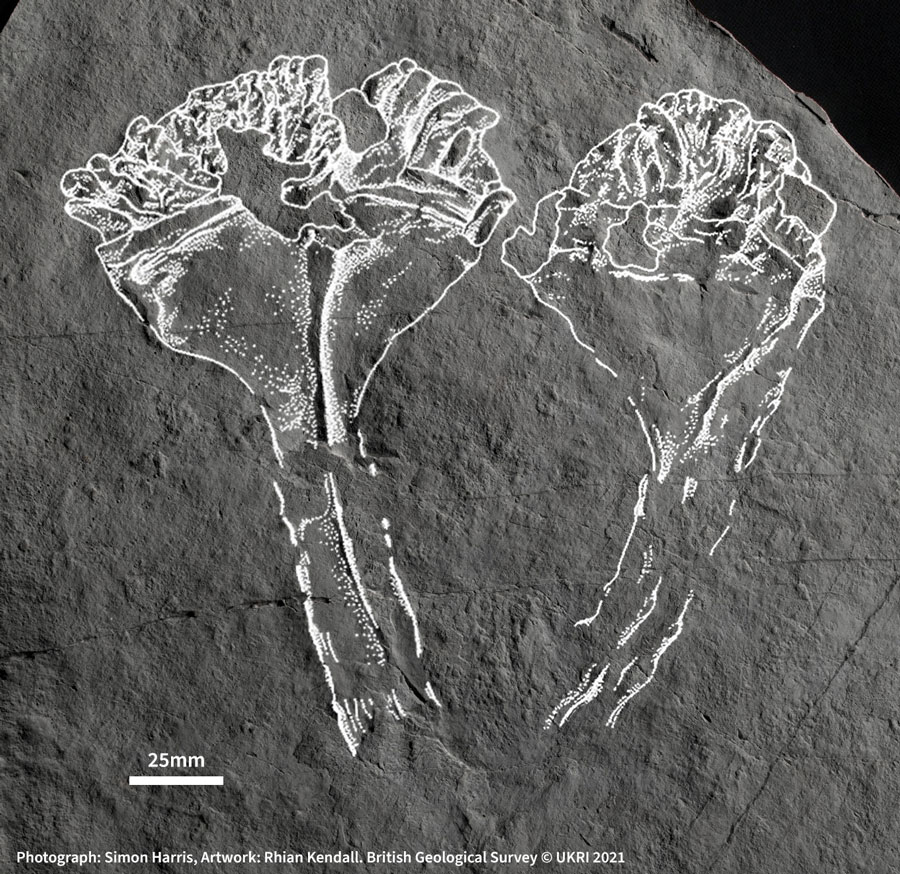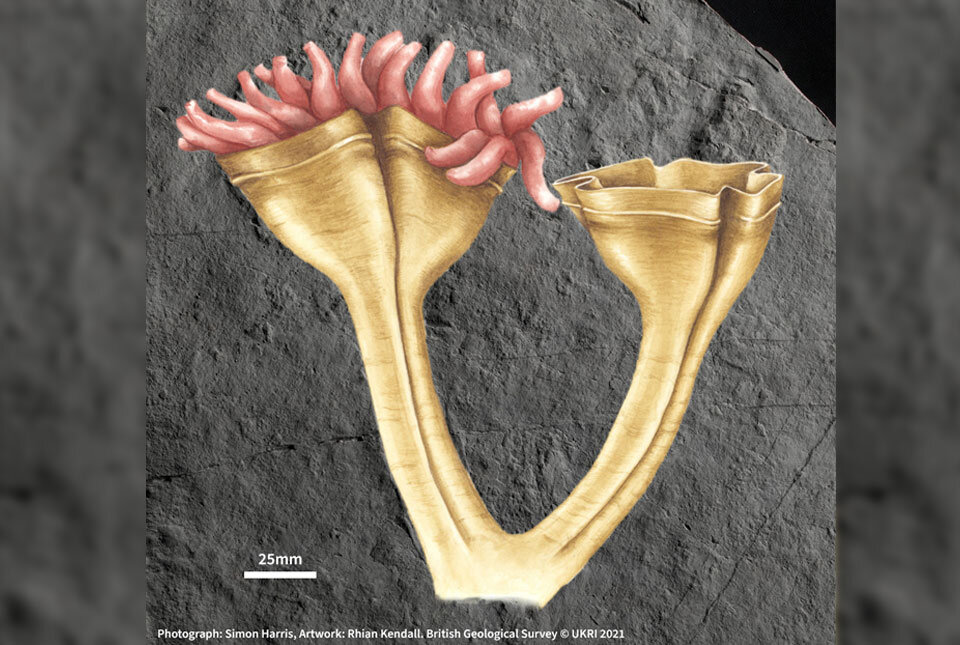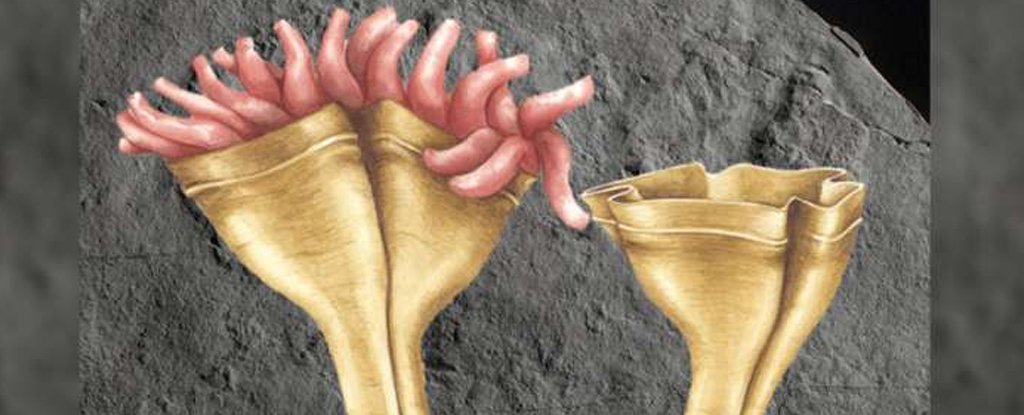Products You May Like
Amongst thousands of impressions in a large rock surface, one stood out from the crowd. The imprint of a tough tubular exoskeleton topped with waving tentacles, now frozen in time, looked strikingly familiar, unlike any of its neighbors.
It looked just like a relative of corals, anemones, and jellyfish from a sediment layer dated 20 million years before Cnidaria like these were thought to exist.
“It’s nothing like anything else we’ve found in the fossil record at the time,” says paleontologist Frankie Dunn from the Oxford University Museum of Natural History.
“Most other fossils from this time have extinct body plans and it’s not clear how they are related to living animals. This one clearly has a skeleton, with densely packed tentacles that would have waved around in the water capturing passing food, much like corals and sea anemones do today.”
 Outline overlaying the fossil imprint. (BGS/UKRI)
Outline overlaying the fossil imprint. (BGS/UKRI)
The discovery itself was made back in 2007 when researchers from the British Geological Society removed debris from a slab of rock at the Bradgate formation in Charnwood Forest, a well-known fossil site just outside of Leicester.
The rock itself is already regarded as truly ancient, dating to around 557 to 562 million years old. It was a time of truly odd creatures, long before the rich biodiversity of the Cambrian Explosion assembled body plans we’re now more familiar with.
The researchers took a cast of the textured rock for study. Amid the thousands of impressions depicting an assortment of ancient life forms, one looked less alien than the rest. In fact, it looked a little too much like life we’d see today.
Resembling something we might see snaring a passing crustacean on a modern coral reef, the 20-centimeter-long cnidarian now represents the earliest example of a predator.
“The ‘Cambrian Explosion’ was remarkable. It’s known as the time when the anatomy of living animal groups was fixed for the next half a billion years,” explained Dunn.
“Our discovery shows that the body plan of the cnidarians [corals; jellyfish; sea anemones, etc.] was fixed at least 20 million years before this, so it’s hugely exciting and raises many more questions.”
The Ediacaran Period is notable for its sparse but strange, very alien fossils that have no resemblance to anything currently living. The new find supports the theory that this time period is also the dawn of modern animals. The seeds of at least one animal group we know today were first planted then, just in time to really flourish and diversify during the prolific Cambrian age.
So Dunn and his colleagues named the fossilized animal’s genus Auroralumina, meaning dawn lantern for its resemblance to a burning torch. To the delight of Sir David Attenborough, who hunted for fossils nearby as a boy, they gave it the species name attenboroughii.
 Artist’s impression of the 560 million-year-old predator. (BGS/UKRI)
Artist’s impression of the 560 million-year-old predator. (BGS/UKRI)
This strange but familiar creature shares characteristics common with early Cambrian cnidarians; however, unlike them, its tough exoskeleton is smooth rather than ornamented.
“It’s the earliest creature we know of to have a skeleton,” says Dunn. “So far we’ve only found one, but it’s massively exciting to know there must be others out there, holding the key to when complex life began on Earth.”
Auroralumina attenboroughii’s large size, compared to other known relatives, may mean it doesn’t have the free-swimming medusa stage of its lifecycle like jellyfish and corals do, the team suspects. Anemones also lack this stage – they’re sessile animals always remaining stuck in place.
The researchers believe this lonely little predator may have been swept into deeper water from a shallower home on the flank of a volcanic island by a deluge of volcanic ash. It lies at an odd angle compared to its neighbors in death, who were all flattened and forevermore preserved in that direction when the deluge hit.
This research was published in Nature Ecology & Evolution.
